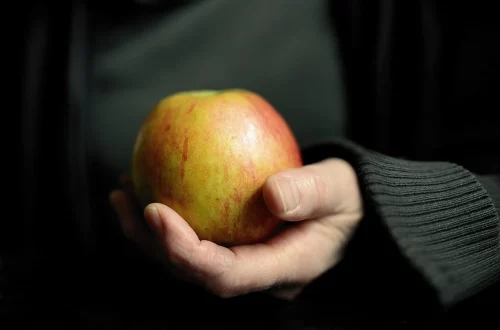
Do Airheads Contain Gelatin? Exploring the Ingredients Inside
Airheads are a popular candy that has captured the hearts of many with their chewy texture and vibrant flavors. Known for their unique ability to deliver a burst of fruity taste, Airheads have become a staple in the world of confectionery. But as with many treats, there are questions about the ingredients that make up these delightful snacks, particularly concerning gelatin. Gelatin, a common ingredient in many candies, has become a topic of interest for those who are mindful of dietary restrictions, including vegetarians and those with allergies. Understanding the components of Airheads can help consumers make informed choices about what they eat.
As our society becomes increasingly health-conscious and ingredient-savvy, it’s essential to delve into what exactly goes into our favorite sweets. The transparency of food labeling has led many to scrutinize ingredients more closely, prompting questions about what is found in popular confections like Airheads. This curiosity extends beyond just the taste or appearance of the candy; it encompasses ethical considerations, dietary preferences, and health implications. In this exploration, we will uncover the truth about gelatin in Airheads and examine the broader context of candy ingredients.
What Are Airheads Made Of?
Airheads are primarily made from a mix of sugar, corn syrup, and various flavorings and colorings that contribute to their signature taste and appearance. The base ingredients create a chewy texture that is both enjoyable and satisfying. The candy is known for its vibrant colors, which are achieved through food dyes, and its wide array of flavors that cater to diverse palates.
The sugar and corn syrup provide sweetness and contribute to the candy’s chewy consistency. These ingredients are fundamental in many candy recipes, serving as the backbone for both texture and taste. Additionally, Airheads contain other components such as citric acid, which adds a tangy flavor, and natural and artificial flavorings that create the candy’s distinctive fruity profiles.
Another critical aspect of Airheads is the presence of the emulsifier known as palm oil. This ingredient helps maintain the candy’s texture and prevents it from sticking together. Without emulsifiers, the consistency of candies can be compromised, leading to an undesirable product that may not satisfy consumers.
It’s also worth noting that Airheads are gluten-free, making them a suitable choice for those with gluten sensitivities. This aspect can appeal to a broader audience, as many snackers seek gluten-free options in their diets. However, individuals with specific dietary requirements should always check the packaging for the most accurate ingredient list.
In summary, while Airheads contain a mix of familiar ingredients that contribute to their taste and texture, understanding these components is crucial for those who are mindful of what they consume. The absence of gelatin in their ingredient list makes them a more inclusive choice for those avoiding animal-derived products.
The Role of Gelatin in Candies
Gelatin is a common ingredient in many types of candy, particularly gummy candies and marshmallows. Derived from collagen, which is found in animal bones and skin, gelatin provides a unique texture that is both chewy and satisfying. Its use in confectionery is widespread due to its ability to help candies maintain their shape while providing a smooth mouthfeel.
In candies that do contain gelatin, it serves as a gelling agent that contributes to the overall structure. This is particularly important for candies that are molded into specific shapes or need to hold up under various conditions. For many traditional sweets, gelatin is a key ingredient that helps achieve the desired consistency and taste.
However, the use of gelatin raises concerns among certain consumer groups, particularly vegetarians, vegans, and those with dietary restrictions based on religious or ethical beliefs. As a result, many confectionery brands have begun to explore alternative gelling agents, such as agar-agar or pectin, which are plant-based. These alternatives allow brands to cater to a wider audience while maintaining the quality and taste of their products.
The growing awareness of dietary restrictions has prompted a shift in the candy industry, leading to more products that are free from gelatin. This trend reflects a broader societal move towards more ethical eating practices and greater transparency in food labeling. As consumers become more aware of what goes into their food, the demand for gelatin-free options continues to rise.
In conclusion, while gelatin plays a significant role in many candies, it is absent in Airheads. This absence allows the brand to cater to a diverse consumer base and respond to the growing demand for gelatin-free confectionery. Understanding the role of gelatin in candies helps consumers make informed decisions about their choices and dietary preferences.
Alternative Ingredients in Modern Confectionery
As the food industry evolves, confectionery brands are increasingly turning to alternative ingredients to meet the changing demands of consumers. With the rise of dietary restrictions and a growing focus on health and wellness, many brands are exploring options that eliminate common allergens and animal-derived ingredients.
One significant trend is the use of plant-based gelling agents such as pectin and agar-agar. Pectin, derived from fruits, is an excellent alternative to gelatin and is commonly used in jellies and jams. Agar-agar, sourced from seaweed, is another popular choice that provides a similar texture without using animal products. These alternatives allow confectionery manufacturers to create products that are accessible to a broader audience, including those who follow vegetarian or vegan diets.
Another area of innovation is the use of natural sweeteners. With growing concerns over sugar consumption, many brands are experimenting with alternatives like stevia, erythritol, and monk fruit extract. These sweeteners can provide the desired taste without the added calories of traditional sugars, appealing to health-conscious consumers.
Moreover, the focus on natural colorings and flavorings has gained momentum in the industry. Many modern candy brands are opting for colors derived from fruits and vegetables instead of synthetic dyes. This shift not only addresses health concerns but also aligns with consumer preferences for cleaner, more natural products.
In summary, the landscape of confectionery is changing, with many brands opting for alternative ingredients to cater to diverse dietary needs. The absence of gelatin in Airheads is part of this broader trend, which focuses on inclusivity and transparency in food production. As consumers continue to seek out healthier and more ethical options, it will be fascinating to see how the industry adapts and evolves.
Conclusion: Understanding Ingredients for Better Choices
In an age where consumers are more informed than ever about what they eat, understanding the ingredients in our favorite snacks is crucial. Airheads, with their absence of gelatin, provide a candy option that caters to a wide array of dietary preferences. This transparency allows consumers to enjoy their treats without compromising their values or dietary needs.
The candy industry is increasingly responding to consumer demands for healthier, more ethical products. With the rise of plant-based alternatives and a focus on natural ingredients, the future of confectionery looks promising. Brands that adapt to these trends are likely to thrive, as they cater to a more health-conscious and ingredient-savvy audience.
Ultimately, being informed about the ingredients in candies like Airheads empowers consumers to make better choices that align with their dietary preferences and ethical beliefs. As we continue to explore the world of candy, understanding what goes into our treats can enhance our enjoyment and ensure that our snacks fit into our lifestyles.
**Disclaimer:** This article is for informational purposes only and does not constitute medical advice. For any health-related concerns, please consult a healthcare professional.




